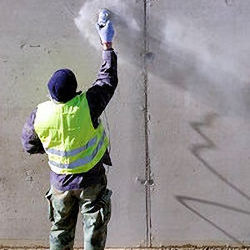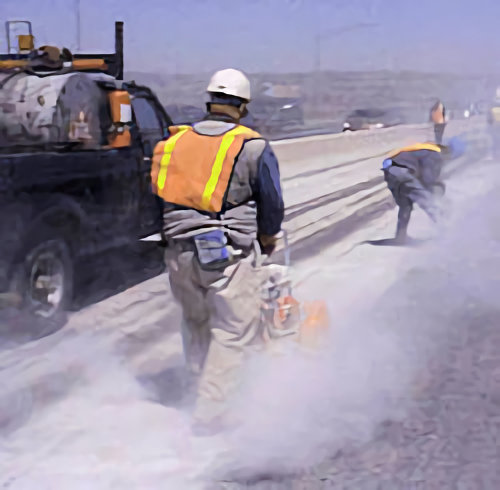Concrete Grinders and Cutters
Construction workers who perform concrete grinding and cutting may breathe dust that contains respirable crystalline silica (RCS).
Construction workers who perform concrete grinding and cutting commonly breathe dust that contains respirable crystalline silica (RCS).
Grinding/polishing Dry grinding and polishing is the method most commonly used in the industry. A NIOSH study found that workers dry grinding concrete to smooth poured concrete surfaces were exposed to high levels of dust containing RCS, ranging from 35 to 55 times the NIOSH recommended exposure limit (REL). Wet polishing uses water to cool the diamond abrasives and eliminate grinding dust.
Concrete cutting is a process of controlled sawing, drilling and removing concrete.
Skilled operators use special saws to cut concrete and asphalt. As with grinding, dry cutting is most often used.
- Careful selection of saw blades can help reduce exposure.
- Diamond saw blades produce less dust and require less water which make them better than abrasive saw blades to cut.
The concrete saw should have a local exhaust ventilation (LEV) system, which can capture the majority of dust emitted during the cutting operation. When operating, the operator should always wear personal protective equipment (PPE).
A local exhaust ventilation (LEV) system can be used to reduce the exposure to silica dust. The LEV system consists of a grinder equipped with a ventilation shroud, a length of flexible hose, and a portable electric vacuum cleaner that acts as a fan and dust collector for the ventilation system. See illustration above.
Grinder Accident
Knowledge Check Choose the best answer for the question.
5-4. What do construction workers who perform concrete grinding and cutting commonly breathe?
You forgot to answer the question!


